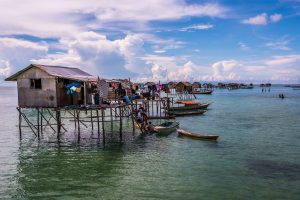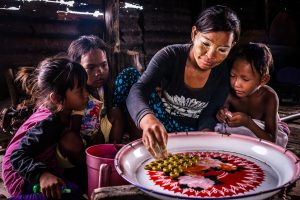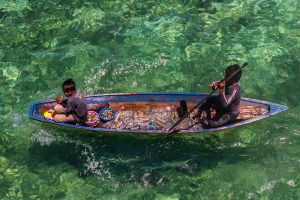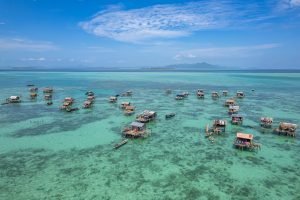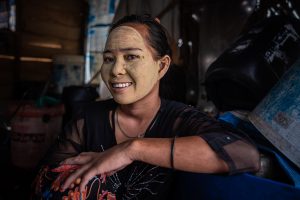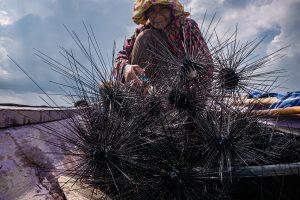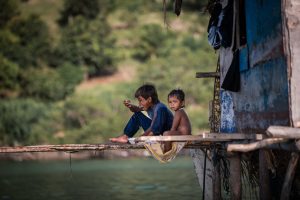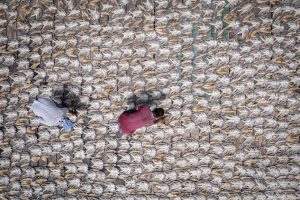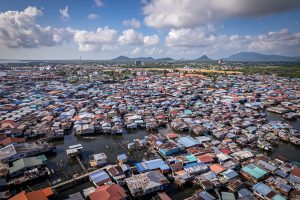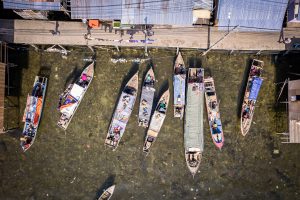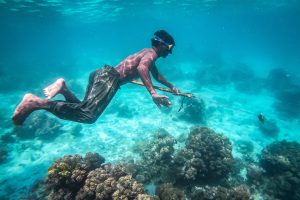The Bajau people have long traversed the Sulu Sea, but their lives grew more complicated with the establishment of borders by Malaysia, the Philippines, and Indonesia during the colonial era. Migration between the Philippines and Malaysia’s Sabah region was common in the 15th century. However, the Malaysian Immigration Act of 1959/1963 disrupted worry-free seafaring by failing to distinguish between asylum seekers, refugees, irregular migrants, and stateless individuals. Besides, the civil war in western Mindanao in 1970 led many Bajau families to struggle with Malaysia’s bureaucracy after migrating to Borneo’s East Coast. To the Bajau, borders represent the farthest reach of their boats.
Today, only 100-200 seafarers remain on traditional “Lansa” houseboats near Borneo’s shorelines. Financial constraints and tree-cutting restrictions imposed by Sabah Parks push many to join offshore communities or become outcasts on the mainland, devoid of rights and citizenship. Consequently, Bajau of Philippine descent gather on offshore communities, including small islands, to preserve their ancestral maritime hunting skills. However, being stateless deprives them and their children of government privileges like education and formal employment.
To this day, the seafaring Bajau defy the relentless rhythms of globalization and continue to slip through the cracks of modernity. Their frugal way of life is as vibrant as ever, yet they are increasingly drawn closer to the urban marketplace, where they must now contend with the harsh laws of civilization.
The future of the Bajau is challenged by factors such as climate change, particularly the increasing water temperature that will affect their hunting grounds and consequently threaten their traditional way of life. This situation forces them to adapt to new environmental realities.
Despite their hardships, the Bajau have safeguarded their artisan talents. A self-taught carpenter can design a fishing boat without sketches in just a week. They construct charming stilt huts through three weeks of collective effort, accommodating families or communities of up to 30 people.
The Bajau are renowned as exceptional freedivers, thanks to their enlarged spleens, enabling them to stay underwater for up to 10 minutes at depths of 200 feet. Their unique abilities influence their diet, including the consumption of sea creatures not typically considered delicacies. Sea cucumbers, for instance, provide valuable protein, and they also possess medicinal properties for diabetes, cancer, and even act as an aphrodisiac. Families spontaneously trade surplus seafood, such as fish, lobster, and sea cucumber with nearby islanders, procuring essential items for their survival.













